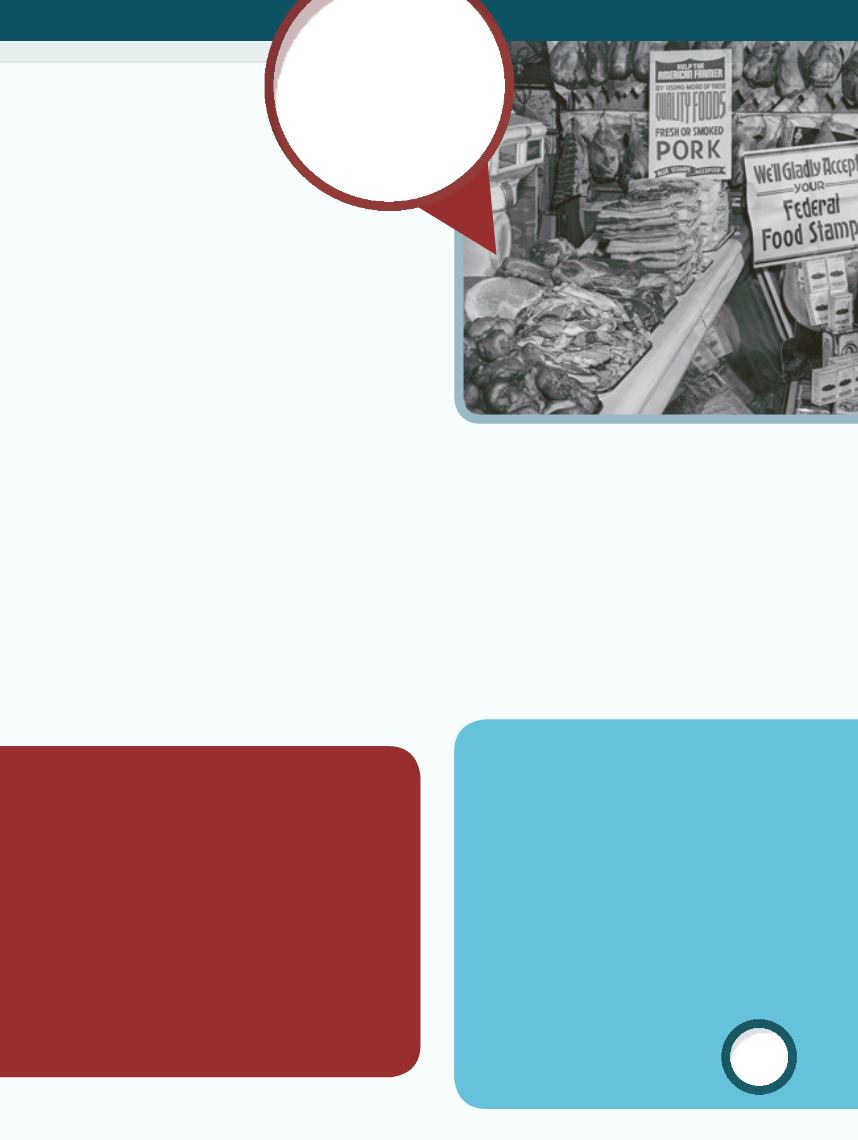
took the news
hard. And even
though prices
dropped, many
things were still too
expensive to afford. Families learned
to do without basic items, such
as toothpaste. They used baking
soda instead. For toilet paper, they
used newspapers or magazine
pages. Churches and other religious
organizations arranged soup and
bread lines in large cities. They
provided food to those who couldn’t
afford it.
Women learned to stretch food by
adding inexpensive ingredients, such
as potatoes and noodles. Every
household item could be saved and
repurposed. Shoes were stuffed
with cardboard when the soles wore
out. Worn-out sheets were cut and
resewn with other sheets. Towels
were mended or cut down and made
into washcloths. Many people never
stopped saving things, even when
times got better.
DEPRESSION ERA
SHOPPING
Shop owners lowered their
prices to try to sell things.
In 1933, milk was just 9¢
per quart. Bread was 6¢.
And a new white shirt was
only $1.95. But even at very
low prices, some things
were just too expensive
for some families.
THINK ABOUT IT
During the Great Depression,
a tube of toothpaste cost 25¢,
and a small radio cost $40.
Many families saved in order to
purchase a radio but couldn’t
afford toothpaste. Why would
families choose an expensive
radio over toothpaste?
Stores lowered
their prices to try to
get customers to buy
their products.
9


